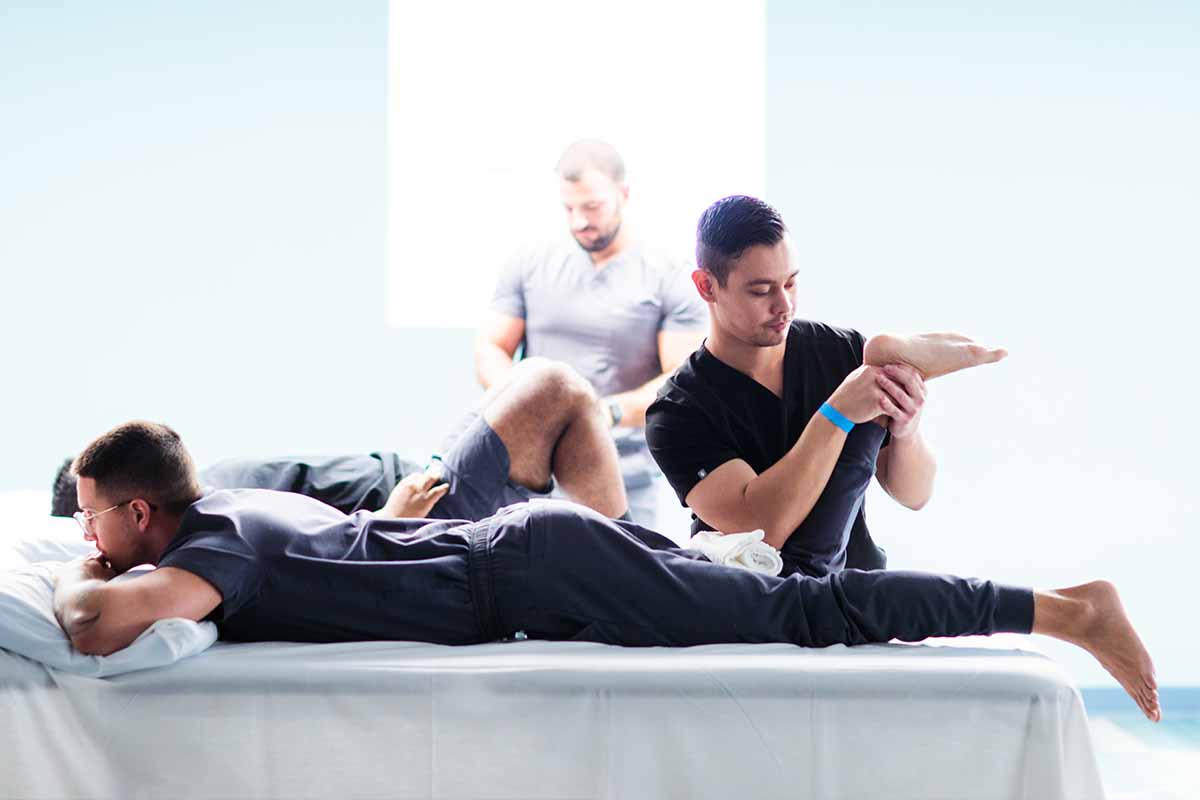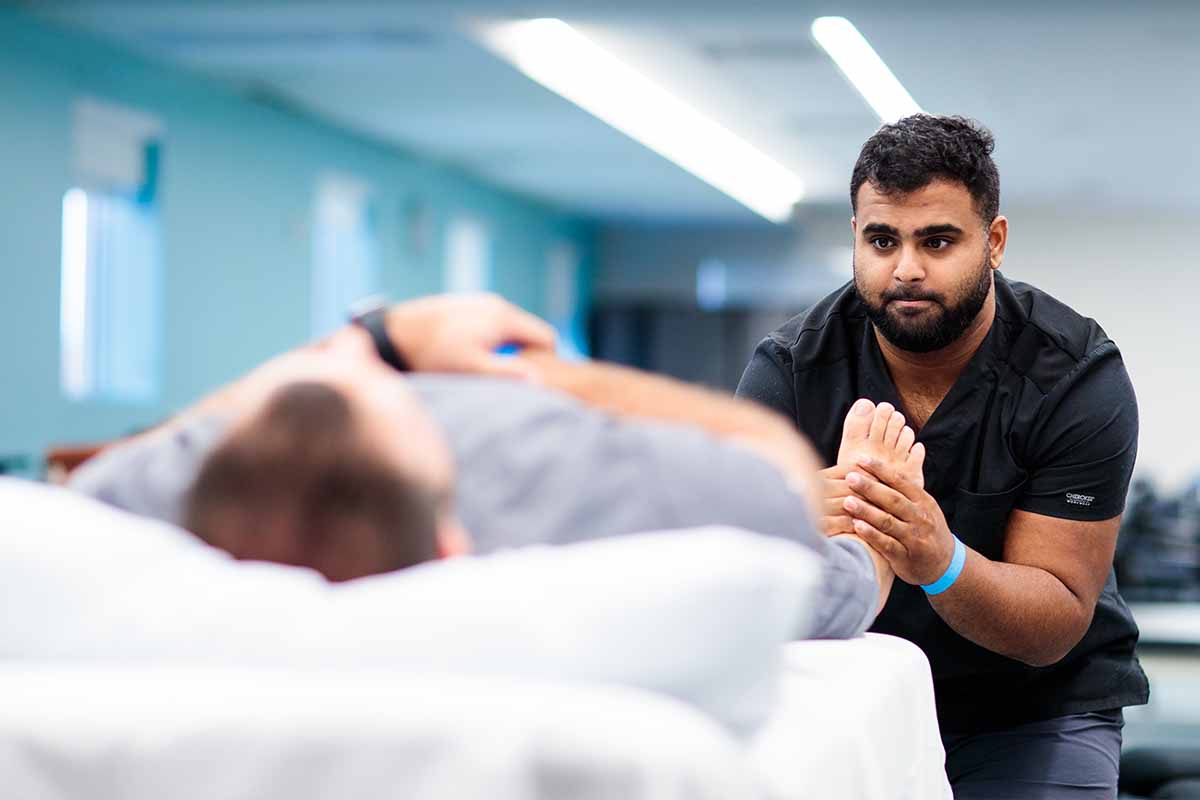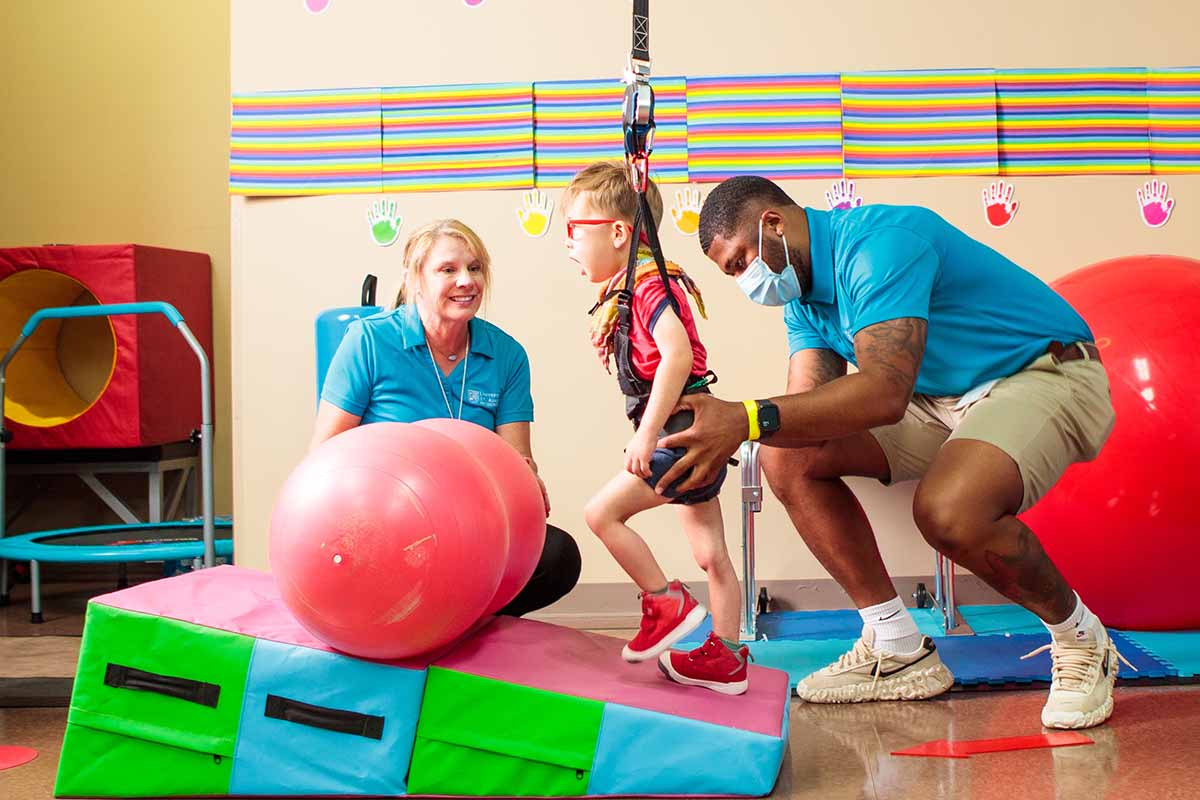
Falls are one of the leading causes of injury among older adults, particularly those over the age of 65. While many may view a fall as an unfortunate accident, the reality is that these incidents can be life-altering, causing significant physical harm, emotional distress, or worse. According to the Centers for Disease Control and Prevention (CDC), falls cost the healthcare system $50 billion annually, so finding effective prevention strategies is critical.
The University of St. Augustine for Health Sciences (USAHS) Miami, FL campus is at the forefront of falls prevention, delivering innovative, community-based solutions that promote long-term independence and mobility.
Holistic fall prevention
One such answer is the Falls Prevention Program at USAHS Miami. The multifaceted initiative fuses functional training, education, dynamic gait training and martial arts-based movements to equip participants with the skills and knowledge to reduce their fall risk.
Miguel Garcia, PT, DPT, EdD, an Associate Professor at USAHS Miami, leads this effort, emphasizing the importance of personalized care in helping patients regain confidence and control over their movements.
A prime example of the program’s success is Juan, a 74-year-old man who, a decade after surviving a motorcycle accident, still battled the lingering effects of his injuries. Despite being independent, Juan feared falling and struggled with balance, which limited his ability to engage with his community.
Juan was active in his recovery, learning to identify and mitigate extrinsic fall risks in his home and surroundings. He also committed to rigorous balance and gait training through the program’s multi-modular obstacle course and walking exercises. With consistent practice, Juan developed the balance strategies needed to prevent falls. He learned martial arts-based techniques to fall safely and reduce injury if a fall occurred.
“We were able to educate Juan on the extrinsic factors in his home and immediate community that increased his risk for falls and how to mitigate such risks,” Dr. Garcia shares.
“With mass repetition, Juan learned how to create the balance strategies necessary to prevent a fall if he were to lose balance.”
Ultimately, Juan overcame his injuries and regained independence at home and beyond, walking without any assistive device.
Tailored fall solutions
Patients like Juan are at the heart of USAHS’s mission. The Falls Prevention Program is not a one-size-fits-all approach. Participants present with diverse medical and neurological conditions, each requiring tailored strategies to address both intrinsic and extrinsic risk factors for falls.
Dr. Garcia asserts that many patients “have neurological conditions that specifically impact their motor control and balance while others have medical conditions that have affected sensation in their limbs.” The program focuses on two critical outcomes: reducing the risk of falling and minimizing injury if a fall occurs.
Incorporating martial arts-based techniques into the program adds a unique layer to the training. As Dr. Garcia explains, while balance and gait training improve a participant’s ability to stay upright, learning how to fall safely is just as important. For Juan, these techniques boosted his confidence and ensured that should he fall, he could do so in a way that minimized injury.


Dr. Miguel Garcia, PT, DPT, EdD, an Associate Professor at USAHS Miami
Strategic prevention approaches
Compelling research supports the need for programs like the one at USAHS Miami. The CDC asserts that falls among older adults result in three million emergency room visits annually, with one million of those leading to hospitalizations. Hip, wrist and rib fractures are the most common injuries, often occurring in the home. They are also common in residential living facilities, healthcare settings and transportation areas. With falls being so prevalent, prevention strategies are urgent.
New bipartisan legislation, like the Stopping Addiction and Falls for the Elderly (SAFE) Act, is poised to bring fall prevention to the forefront of healthcare conversations. The SAFE Act would make fall risk assessments a part of the Medicare wellness benefit, ensuring that seniors receive timely guidance from occupational therapy (OT) or physical therapy (PT) professionals like Dr. Garcia and his team.
“Many seniors don’t realize they are at risk until it’s too late when they have had that first fall and are suffering the consequences,” Dr. Garcia notes.
By making these assessments a part of wellness visits, healthcare providers can better identify and address fall risks before they lead to serious injuries.
Empowering lifelong independence
For Juan, personalized care, evidence-based treatment and legislative support provide a renewed sense of life. Through the USAHS Miami Falls Prevention Program, participants learn to walk with greater stability and gain the confidence to live without the constant fear of falling.
With the passage of the SAFE Act, the potential for physical therapists (PTs) to play an even more pivotal role in fall prevention will only increase, helping seniors remain independent for longer and reducing the financial burden on the healthcare system.
A report by the Moran Company links physical therapy to substantial reductions in hospitalizations, emergency room visits and opioid use among Medicare patients who seek physical therapy following a fall.
A referral to a physical therapist who can accurately assess their fall risk, identify both intrinsic and extrinsic risk factors and create a comprehensive care plan to address these risks is fundamental. Dr. Garcia explains that PT referrals “…can significantly impact the individual’s quality of life and lead to a measurable reduction in total healthcare spending.”
Early intervention and access to care from fall prevention experts are key to staying safe, independent and mobile. Dr. Garcia advocates, “The SAFE Act would be an absolute game-changer for these individuals.”
To learn more about USAHS Miami’s Falls Prevention Program and how it impacts seniors, read Dr. Garcia’s article in South Florida Hospital News and Healthcare Report.










